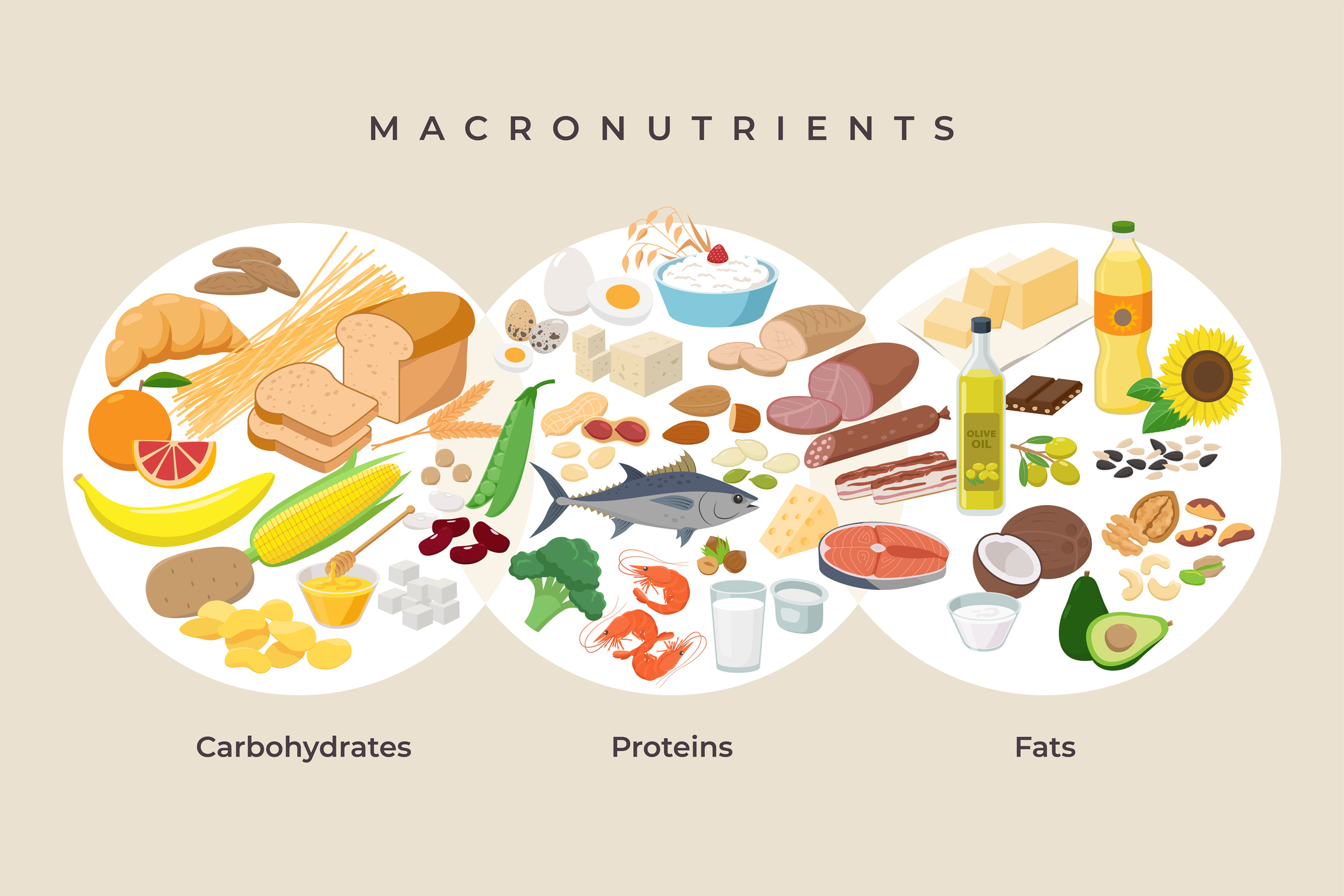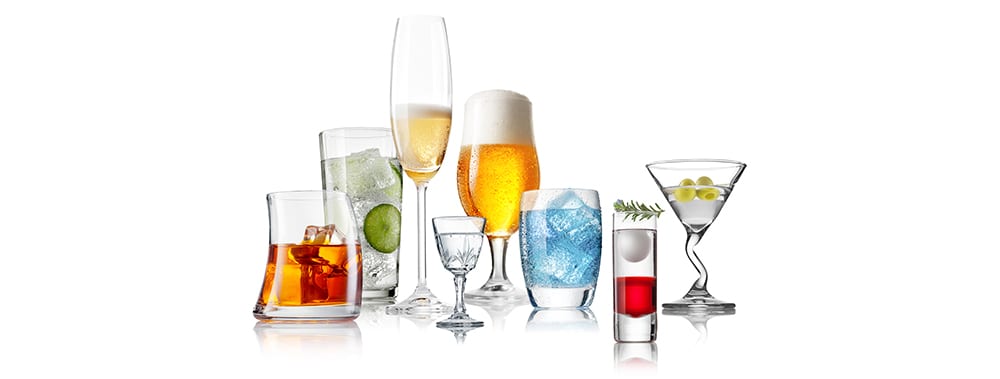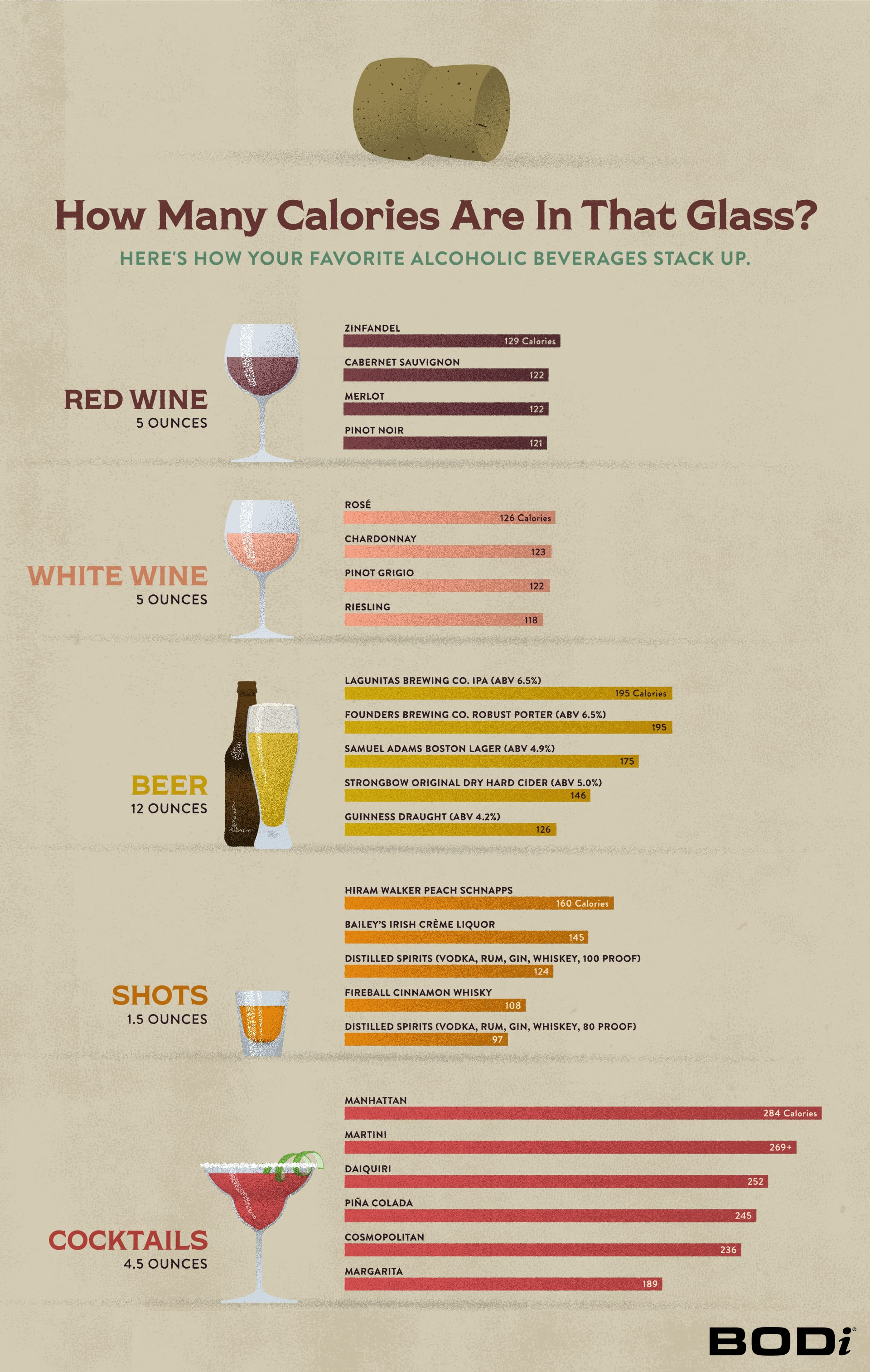The Fourth Macro?! How Many Calories Are in Alcohol

One of the hardest thing about counting macros is that nagging X factor: alcohol. When planning meals for the week, few of us account for the calories in alcohol from, say, afterwork beers or celebratory cocktails.
But even the most carefully considered diet plan can struggle when it comes to booze. Macro mathematicians may also be surprised to learn that alcohol — like carbohydrates, protein, and fat — is technically the “fourth macro.”
Not only can the calorie content of alcoholic beverages vary wildly depending on the type of alcohol and any accompanying mixers or additives, alcohol behaves differently in the body than the other three macros.
Even if you aren’t obsessively counting macros for a strict athletic or weight-loss regimen, your favorite drink may be derailing your efforts to simply lose or maintain weight, too. Read on to find out how and why.
Alcohol: The Fourth Macro?

Let’s take a brief step back and define our terms. What is a macro, anyway?
“Macronutrients are the energy source for our bodies. The body needs carbohydrates, protein, and fat for basic functions, cell repair, and growth,” explains Mascha Davis, RDN, MPH.
To the macro-conscious, these three substrates have historically been the only macronutrients and the main focus of a diet. As Davis adds, “Carbohydrates are the main and preferred source of energy for our bodies, and fats and protein are used when carbs aren’t available. A balance of macronutrients is ideal for optimal functioning.”
But in recent years studies have been classifying alcohol differently. Despite technically being a source of energy, alcohol doesn’t behave, nor is it processed by the body, quite like either of the other three macronutrients.
Alcohol is absorbed rapidly — like a carb — because, unlike food, it doesn’t require digestion. Yet, it has more calories than a carb or protein.
Because it wasn’t a “necessary” dietary component, many nutritionists didn’t classify alcohol along with the other three macros. But in recent years the concept of the “fourth macro” has gained a strong foothold in health and fitness circles.
How to calculate alcohol if you’re counting calories or macros
The difficulty in figuring out how many calories are in alcohol is that there are a lot of mitigating factors that can affect a drink’s calorie count. Not to mention that you need to first clarify what you mean by “alcohol.”
If you come across information that says one gram of alcohol contains seven calories, it’s important to realize that this refers to pure ethanol. We’re not judging your Saturday night, but it’s probably safe to say that you aren’t chugging pure alcohol with friends.
“Alcohol can be a major source of calories, especially since it’s metabolized differently than the other macronutrients,” says Davis. Beer and wine, for instance, have significantly more calories than pure alcohol (see below).
“Alcohol can be part of a healthy diet when enjoyed moderately,” explains Davis. “I recommend lower-calorie drinks prepared with seltzer or on the rocks as opposed to drinks prepared with juice or soda.”
How Many Calories Are in Alcohol?

Davis suggests sticking to hard liquor when you can, which delivers the fewest calories and most controllable amounts. Red wine has other health benefits and certainly has a place in an overall healthy regimen, but moderation is key.
“Alcohol can be part of a healthy diet, but you should be mindful about the amount you drink,” she says. “The current guidelines for women are one drink per day, and two drinks per day for men. This is what I recommend to my clients who do want to consume alcohol.”
When planning out your nutrition, it’s more about knowing yourself and your own habits than memorizing all the factors that go into tracking “the fourth macro.” So here’s a calorie breakdown, on average, of your favorite beverages.
- Beer: 12 oz. = 153 calories
- Light beer: 12 oz. = 103 calories
- Hard cider: 12 oz. = 199 calories
- Red wine: 5 oz. = 125 calories
- White wine: 5 oz. = 121 calories
- Champagne: 5 oz. = 105 calories
- Vodka (80 proof): 1.5 oz. = 97 calories
- Tequila (80 proof): 1.5 oz. = 97 calories
- Whiskey (80 proof): 1.5 oz. = 97 calories
- Gin (80 proof) & tonic: 8 oz. = 216 calories
- Rum (80 proof) & Coke: 8 oz. = 271 calories
- Martini: 3 oz. = 179 calories*
- Manhattan: 3 oz. = 189 calories
- Cosmopolitan: 2.75 oz. = 146 calories
- Piña colada: 4.5 oz. = 245 calories
- Daiquiri: 4.5 oz. = 252 calories
- Margarita: 4.5 oz. = 189 calories
*Martinis can vary wildly depending on type and mixes. A “dry” Martini (with less vermouth) will have a different calorie count than a “wet” Martini (with more vermouth). Even the type of vermouth makes a difference — sweet vermouth has substantially more calories than dry vermouth.

